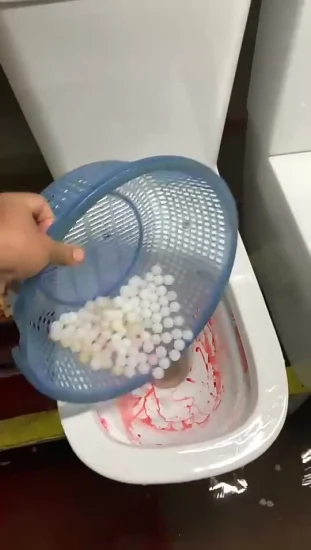Can You to Dispose of Food in the Toilet?
Can You to Dispose of Food in the Toilet?
Blog Article
This post on the next paragraphs pertaining to What Can Happen If You Flush Food Down the Toilet? is particularly enlightening. Read it for yourself and figure out what you think about it.

Intro
Many individuals are usually confronted with the predicament of what to do with food waste, specifically when it involves leftovers or scraps. One usual question that develops is whether it's okay to flush food down the bathroom. In this short article, we'll delve into the reasons that individuals might think about purging food, the consequences of doing so, and alternative approaches for correct disposal.
Reasons people may consider flushing food
Lack of recognition
Some people might not be aware of the possible injury brought on by purging food down the commode. They may mistakenly believe that it's a harmless technique.
Ease
Purging food down the commode might seem like a fast and very easy remedy to taking care of undesirable scraps, specifically when there's no close-by trash bin readily available.
Idleness
Sometimes, individuals may merely select to flush food out of large laziness, without taking into consideration the repercussions of their activities.
Consequences of flushing food down the commode
Environmental effect
Food waste that ends up in rivers can add to pollution and damage water ecosystems. Furthermore, the water used to purge food can stress water sources.
Pipes problems
Flushing food can result in stopped up pipes and drains, causing costly pipes repair services and aggravations.
Types of food that should not be purged
Coarse foods
Foods with coarse appearances such as celery or corn husks can get entangled in pipelines and create blockages.
Starchy foods
Starchy foods like pasta and rice can absorb water and swell, bring about blockages in pipelines.
Oils and fats
Greasy foods like bacon or cooking oils need to never be purged down the commode as they can strengthen and cause obstructions.
Appropriate disposal methods for food waste
Using a waste disposal unit
For homes equipped with garbage disposals, food scraps can be ground up and flushed with the plumbing system. However, not all foods are suitable for disposal in this manner.
Recycling
Particular food product packaging products can be recycled, minimizing waste and decreasing ecological effect.
Composting
Composting is a green method to dispose of food waste. Organic products can be composted and used to improve soil for horticulture.
The relevance of correct waste administration
Decreasing ecological harm
Proper waste monitoring methods, such as composting and recycling, aid reduce pollution and protect natural resources for future generations.
Securing plumbing systems
By avoiding the technique of flushing food down the bathroom, property owners can protect against expensive plumbing fixings and keep the integrity of their pipes systems.
Conclusion
In conclusion, while it may be alluring to purge food down the commode for convenience, it is very important to understand the prospective consequences of this activity. By adopting correct waste monitoring methods and throwing away food waste sensibly, individuals can add to much healthier plumbing systems and a cleaner setting for all.
Flushing Food Down The Toilet Isn't Ideal
Garbage disposal is actually meant to carry kitchen waste. This kitchen plumbing component has made the disposing of food bits and scraps so convenient and easy. However, it is not every kitchen waste that should go down the garbage disposal.
Food waste like fish skins, eggshells, and coffee grounds are not meant for your garbage disposal. Resist the temptation to put them there!
Some persons who do not have functional disposal may be inclined to flush remains of dinner, breakfast, and lunch down the toilet. Other people may decide not to fill up their garbage disposal with organic food matter that could release foul smell in the kitchen. Thus the toilet may be a better option for them.
But, Should You Flush Food Down The Toilet?
The simple reason is that your toilet pipes that carry human waste are not wide enough to convey food waste. Remember, your toilet is meant only for water, human waste, and bio-degradable tissue paper! Food waste is potential drain-blocking materials; they do not easily disintegrate.
Although flushing a bit of food here and there may have minor consequences, a habit of flushing food waste down the toilet can be catastrophic.
Be that as it may if you're comfortable with using your toilet as a garbage disposal for kitchen waste, do it with caution. Check out the list below to know the kinds of food that shouldn't go down the toilet:
Grains like oats, rice, and others expand when mixed in water. This expansion can block your sewer line when you flush grains down the toilet Hard food scraps, including apple cores, bones, and corn cobs, do not decompose easily. Having these food items down your toilet all the time can plug up your toilet drain, block your drains, and become breeding grounds for fatbergs. Worse still, they can compromise your city's wastewater treatment processes. Dispose of this waste in your trash bin! Starchy foods like mashed potatoes can cause a gelatinous obstruction that could slow down the flow of your sewer pipe Fats and oils including butter, meat fat, cooking oils and other oil-containing foods, are not friends with your drain. When fat and oil cool harden inside the sewer lines, they can potentially block your sewage flow. Not only that, they attract other debris and form fatbergs that are disastrous Are You Having A Blocked Toilet?
Have you flushed so much food scraps down the toilet and it's causing a blockage? This is the best time to call the Emergency Plumber for help.
https://www.emergencyplumber.london/camden/blog/why-you-shouldnt-flush-food-down-the-toilet

I'm certainly very taken with Think Twice Before Flushing Food Down Your Toilet and I'm hoping you liked my piece. Enjoyed our blog posting? Please share it. Let someone else find it. I take joy in your readership.
Contact Report this page